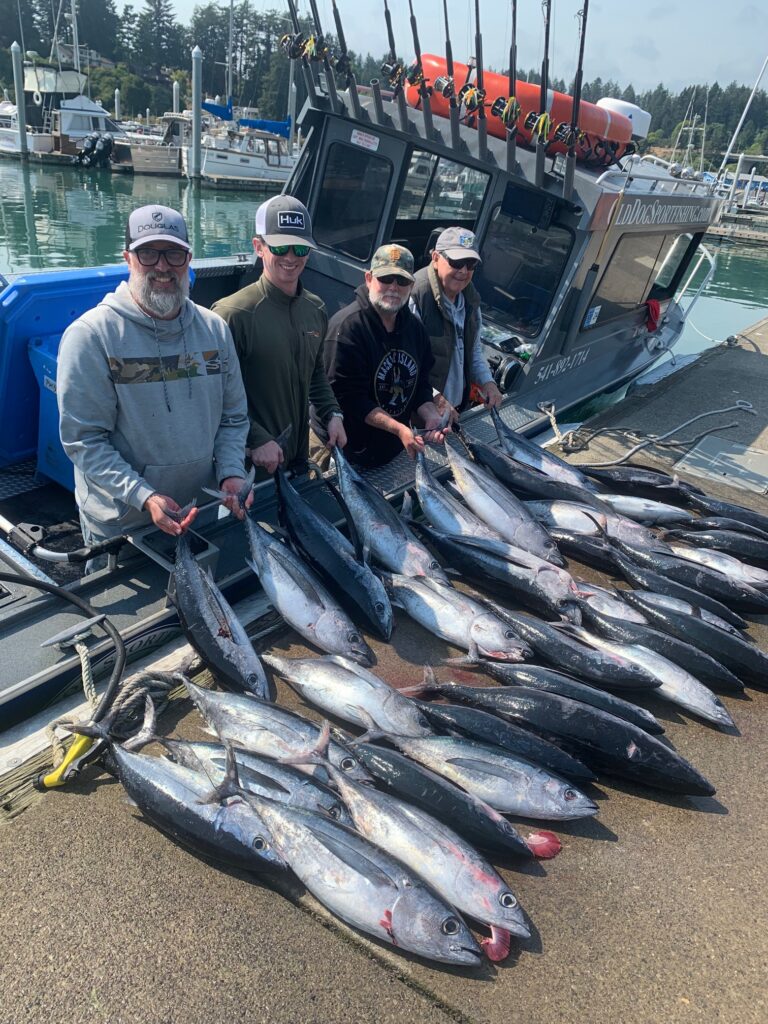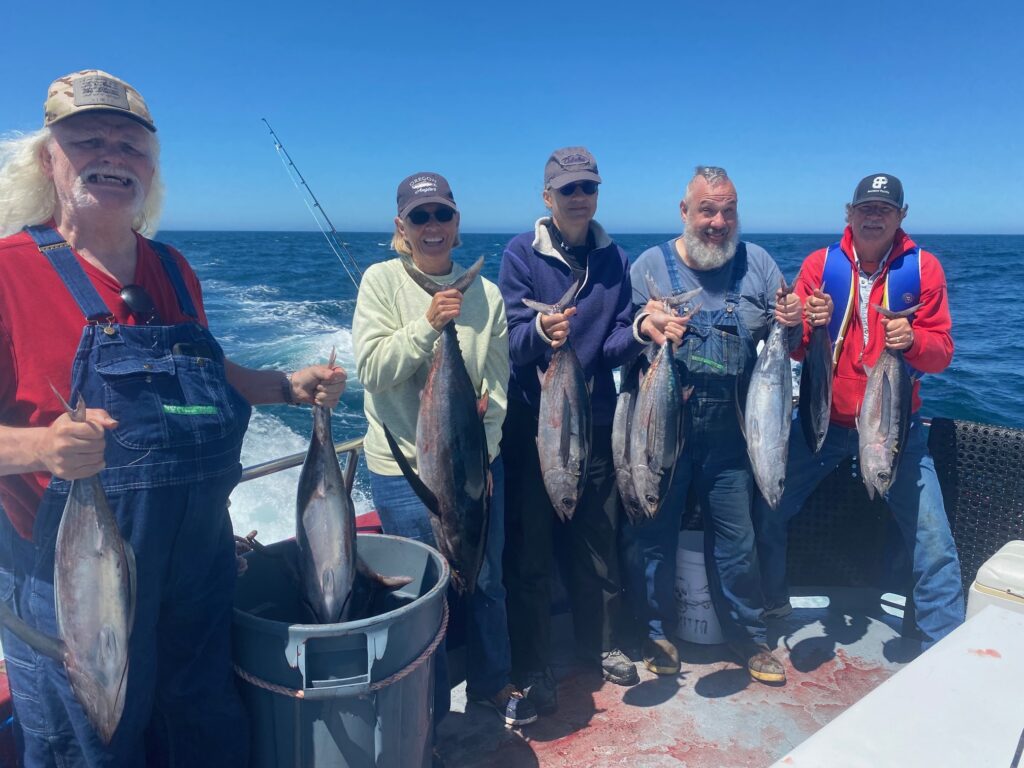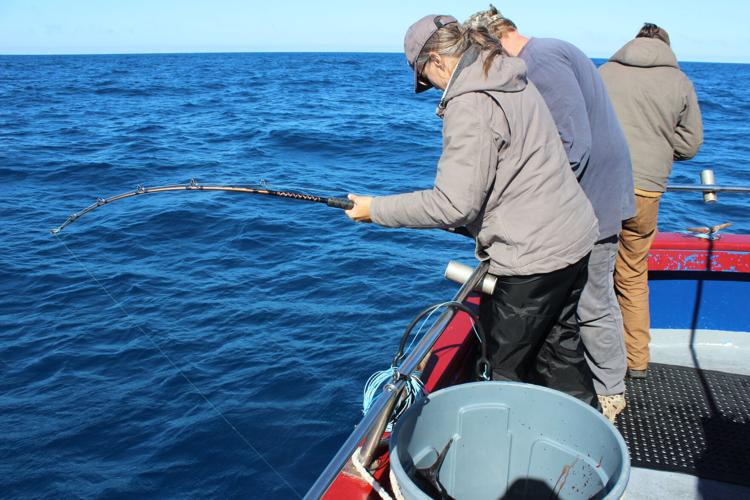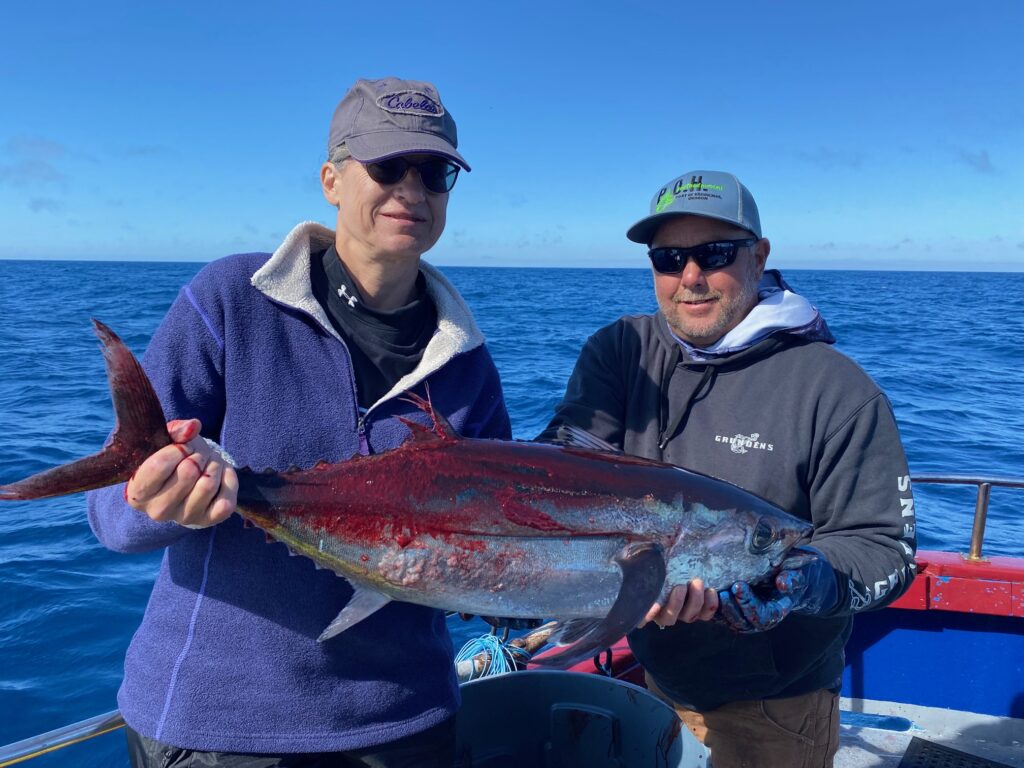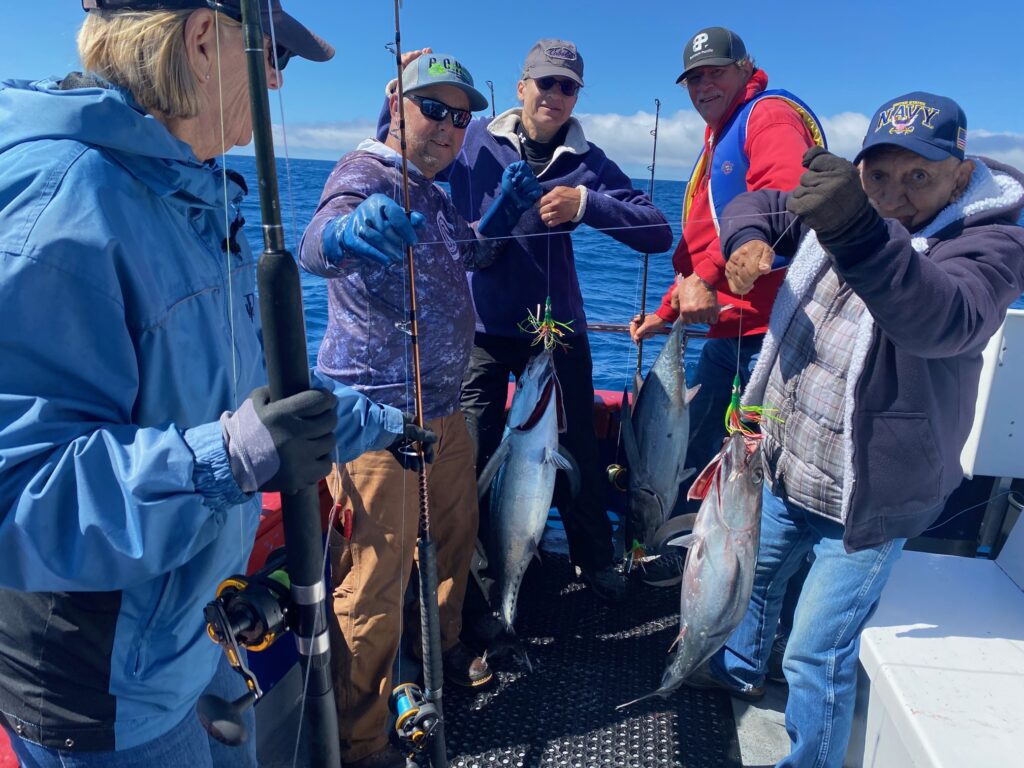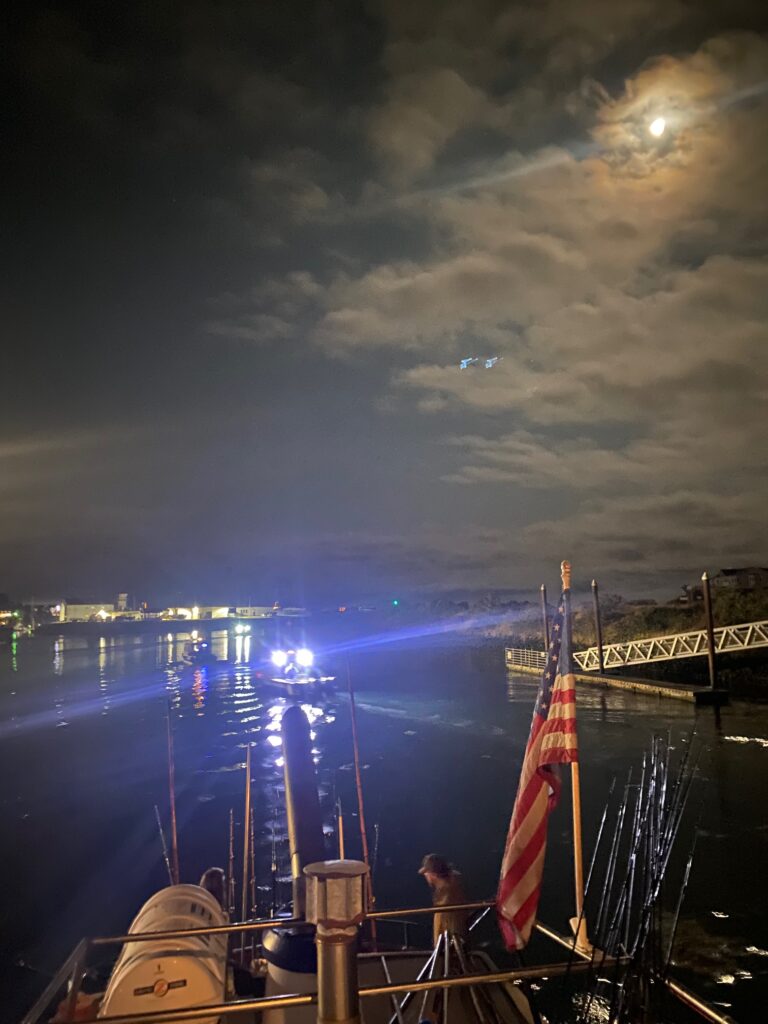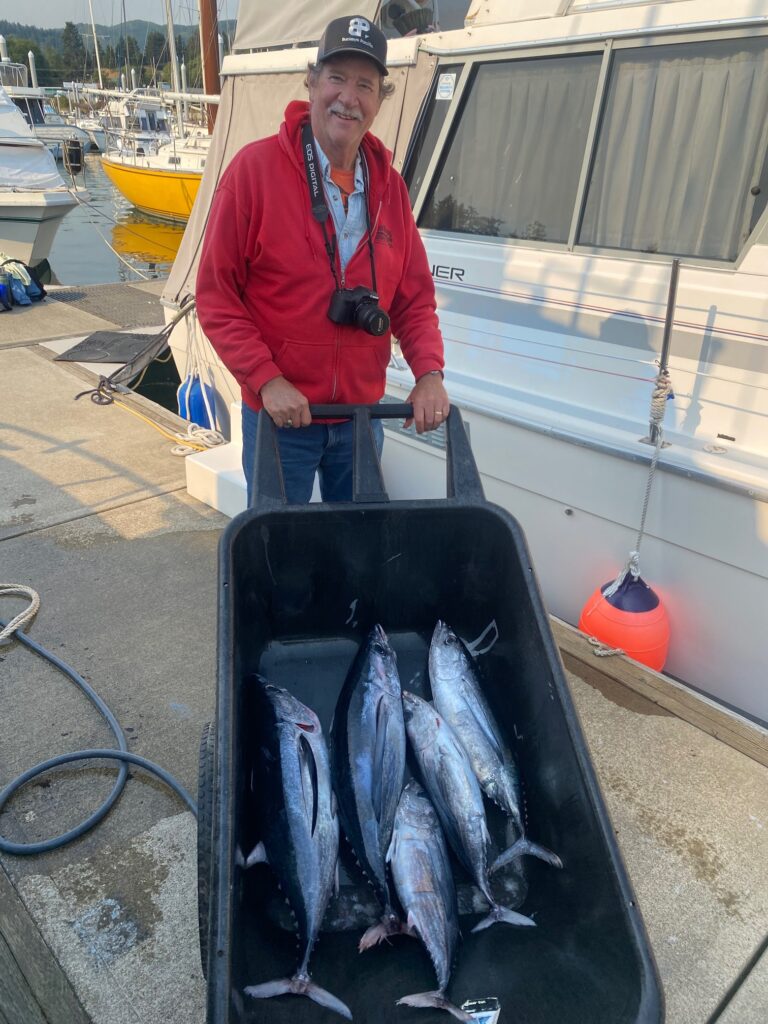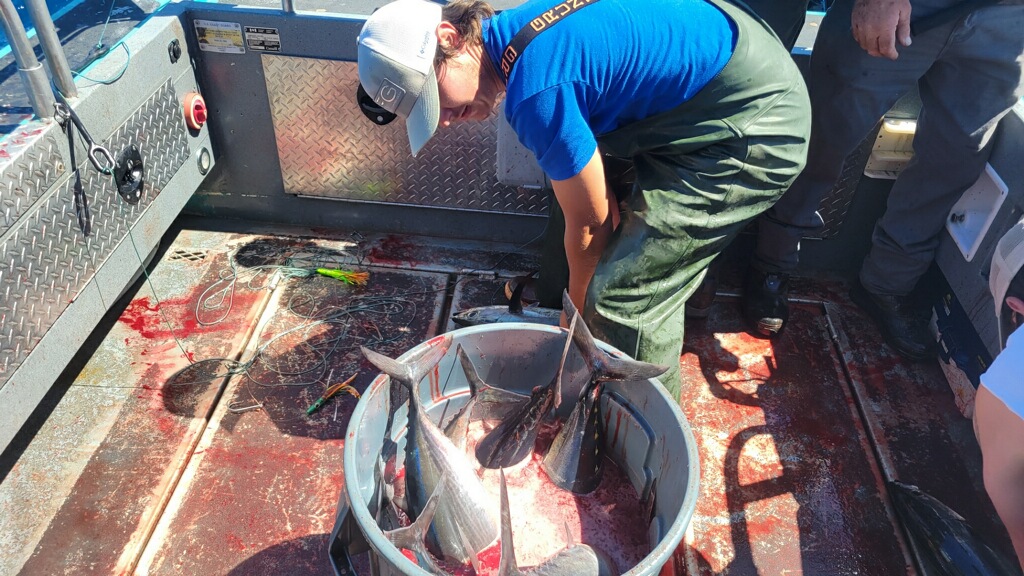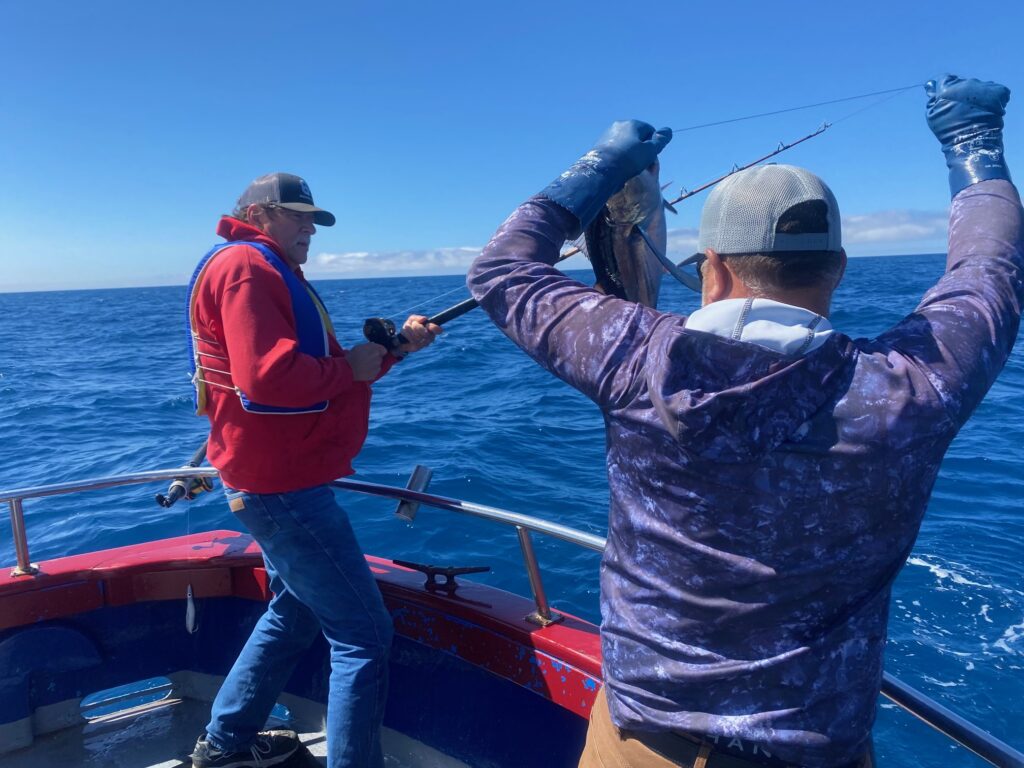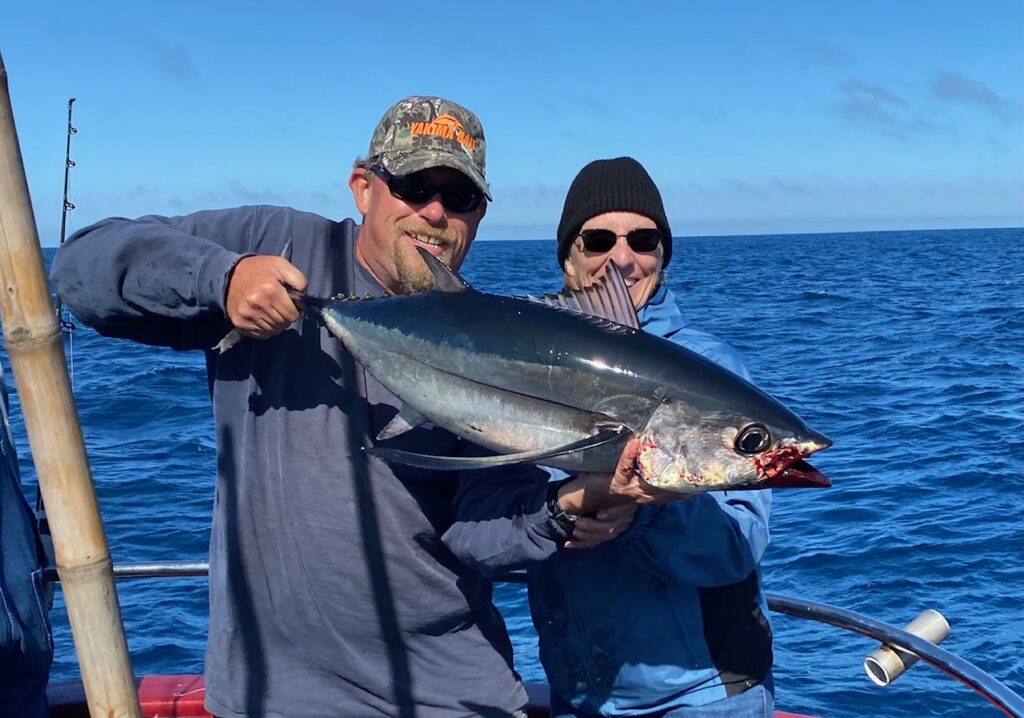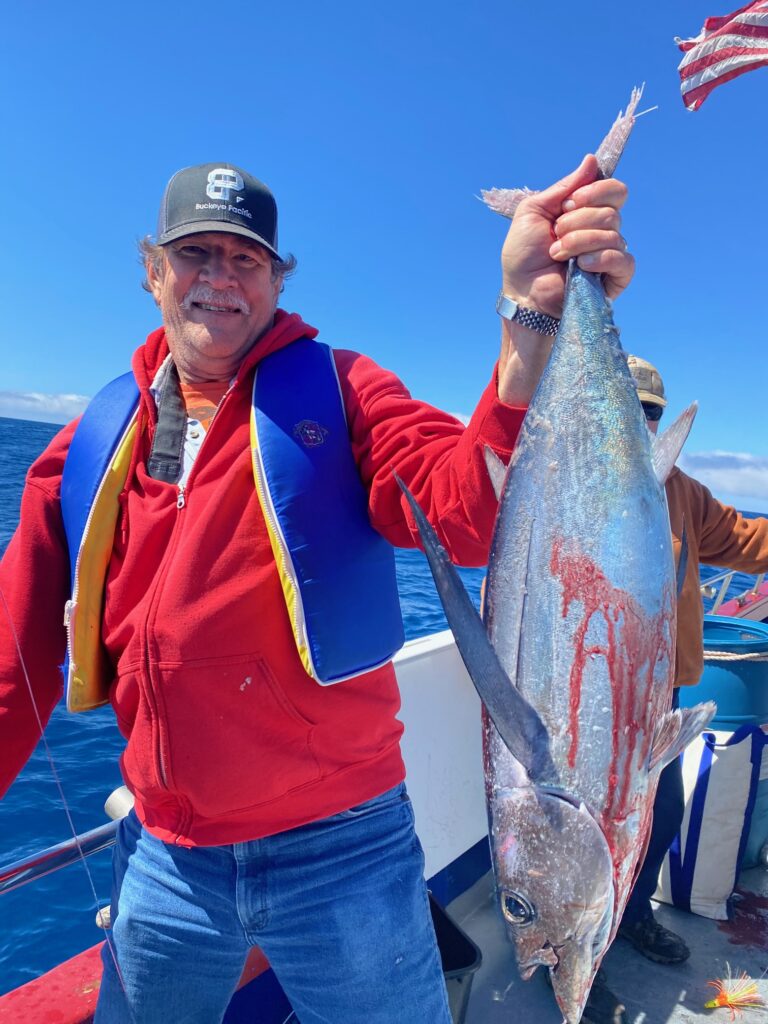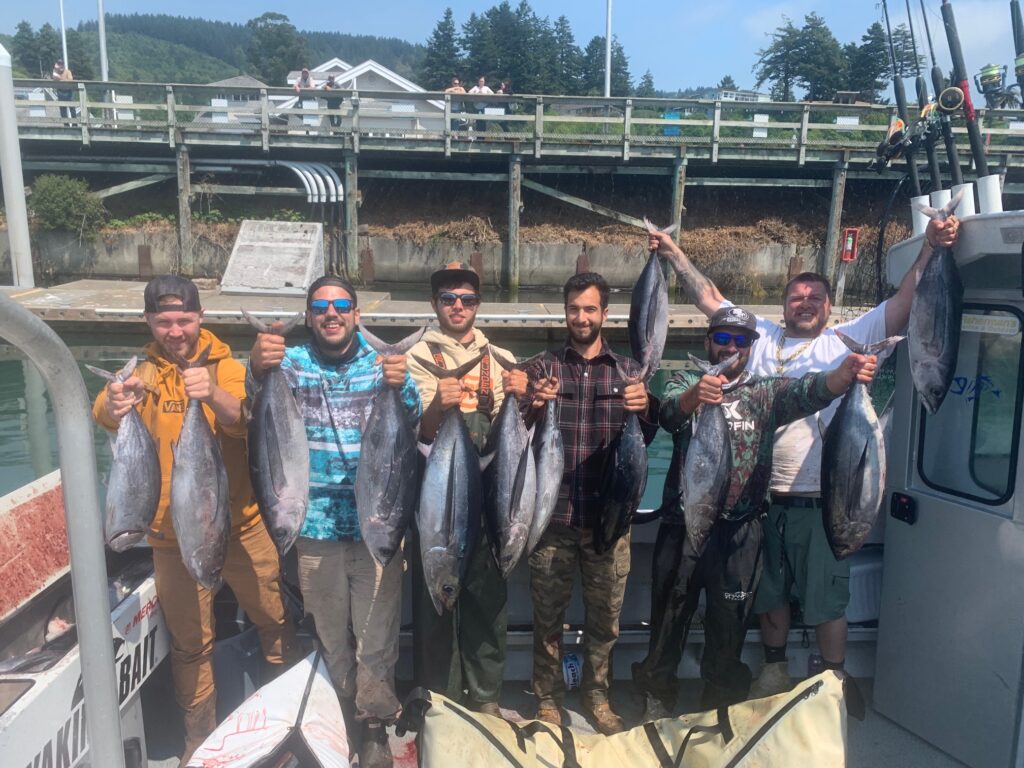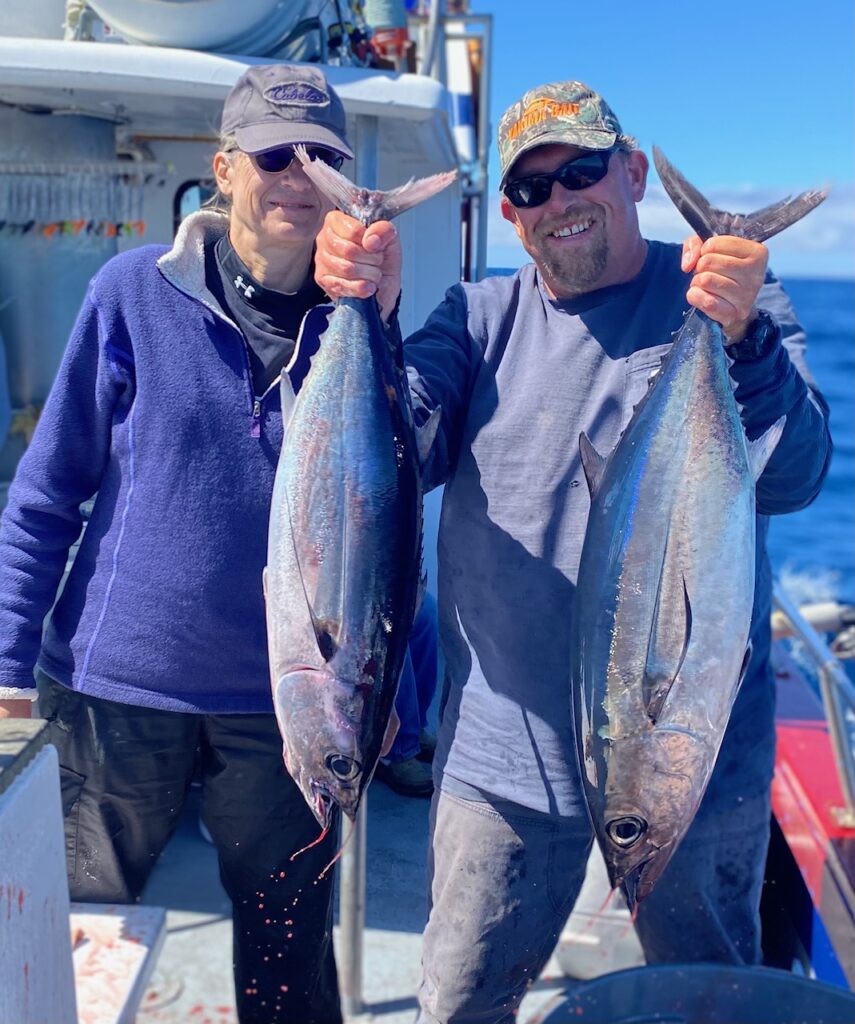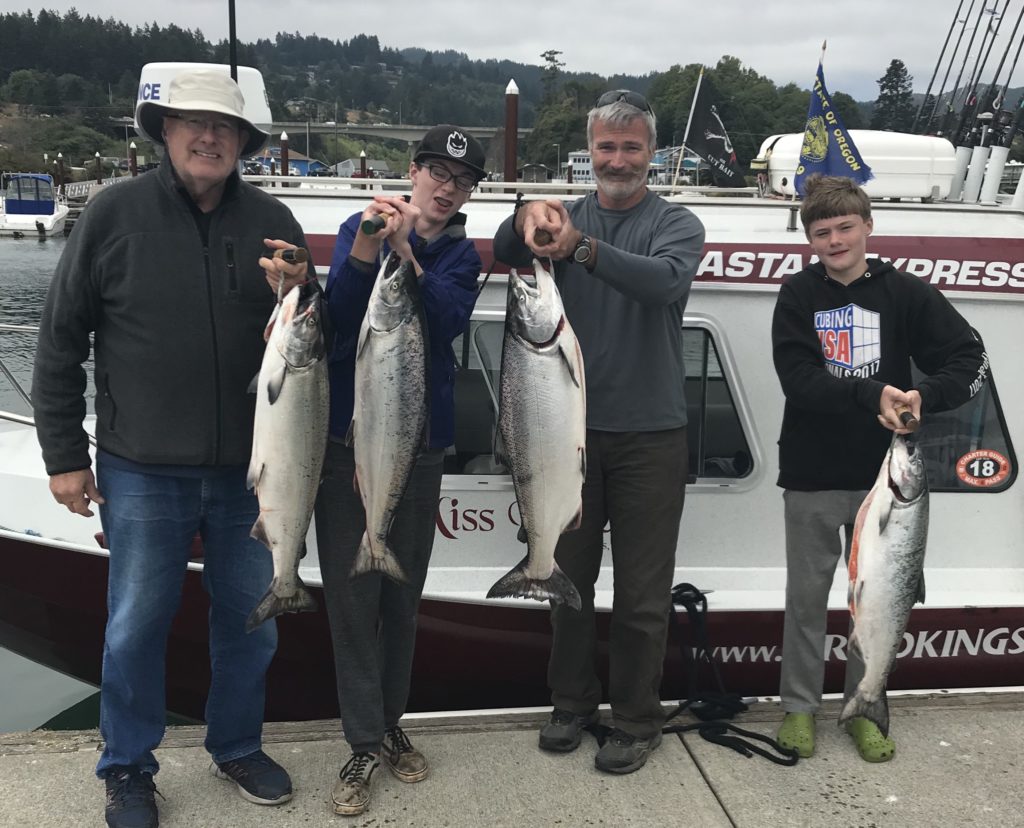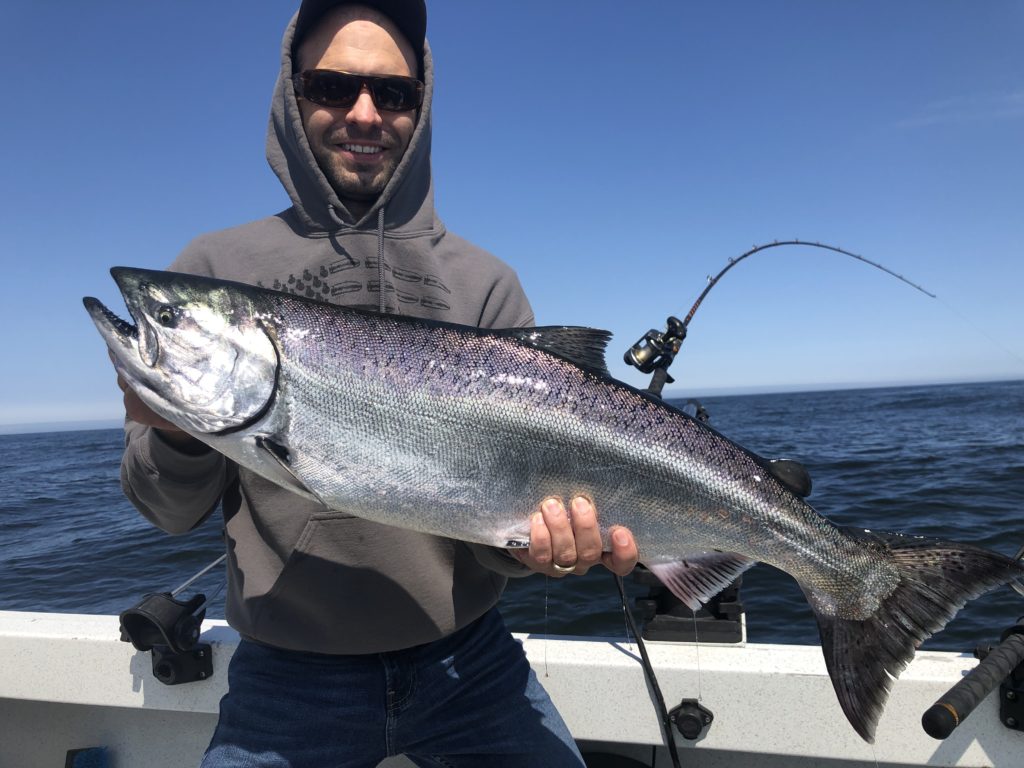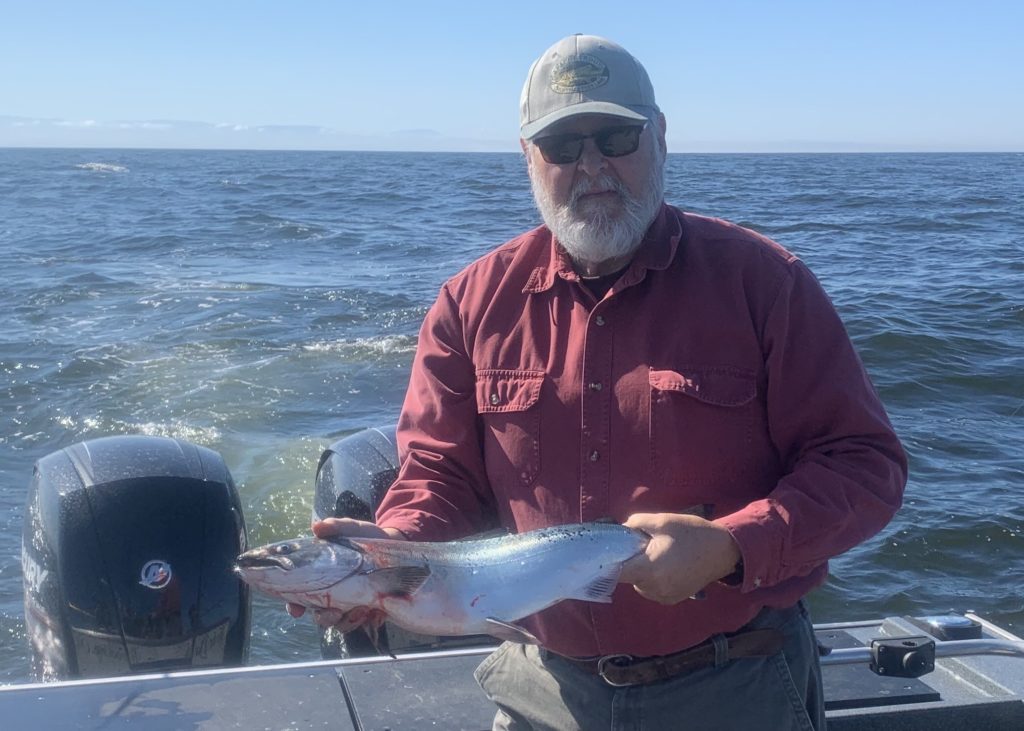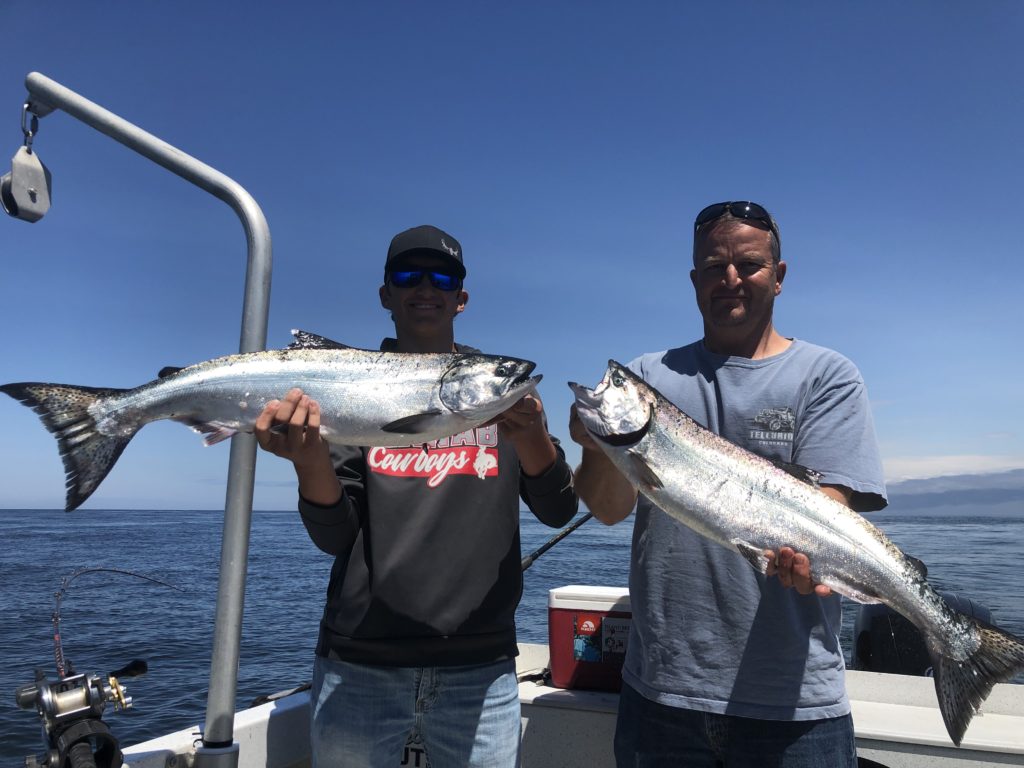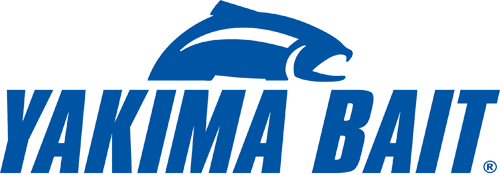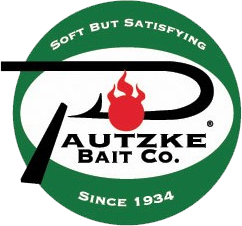By Capt. Andy Martin – During a week-long fishing trip to the mouth of the Mississippi River years ago, I had the chance to enjoy fantastic redfish action in the delta, and a hot yellowfin tuna bite miles offshore. Aside from the great fishing, each night the group I was fishing with got to enjoy the delicious Cajun cooking Louisiana is famous for. One of the most memorable meals was a seafood boil with shrimp and crawfish.

Seafood boils are especially popular on the Gulf Coast, in the Carolinas, and New Englund. Here on the Oregon Coast, seafood boils are a less-seldom way to enjoy fresh crab and shrimp, and locally grown produce, but are gaining in popularity. In Louisiana, seafood boils are part of the culture of the region. Churches, schools and civic groups often use seafood boils as fundraisers. Tulane University holds an annual Crawfest and serves a seafood boil to students. Crawfish are readily available on the Gulf Coast and are the most common ingredient in boils. It’s common to see seafood boils as tailgate feasts at college football games in the South.

My family regularly enjoys seafood boils, especially when we have out-of-town guests. We usually enjoy the boil with fresh crab and shrimp, often with potatoes and onions from our friends in the Klamath Basin. Seafood boils are a regular feast at our house during Spring Break, on Memorial Day, the Fourth of July, and the day before Thanksgiving and Christmas, as our visiting family likes to enjoy local seafood when they come to the coast.

After making countless variations of seafood boils, my favorite recipe includes Tony Chachere’s Cajun seasoning, fresh lemon juice, Dungeness crab, and different varieties of shrimp and prawns available at Oregon Coast seafood markets, or at most grocery stores. Crab is a delicious addition to the boil, but not completely necessary. Fresh Dungeness can also be substituted with snow crab from the grocery store.
Some seafood boil recipes call for chicken broth or white wine. I simply use water, with a generous amount of freshly squeezed lemon juice (our neighbor has a lemon true and a frequent surplus of fresh lemon), and a few tablespoons of Cajun seasoning. If you prefer a less-spicy version, substitute the Cajun seasoning with salt, pepper and a generous amount of Old Bay.

For the shrimp, I’ll peel a pound of smaller shrimp, and then use some jumbo shrimp of prawns with the shell intact. Part of the fun of a seafood boil is peeling the shells and cracking the crab as you feast on the delicious potatoes, onions and corn packed with flavor from the buttery Cajun seasonings and fresh lemon juice. I add raw shrimp to the boil, but usually cook the crab ahead of time and add it to the boil just before it is finished.
A combination of small red and gold potatoes adds color to the seafood boil, and complements the red and orange hue of the shellfish, bright yellow of the corn and dark green of fresh Italian parsley. Small russet potatoes or larger red or gold potatoes can be used, but should be sliced to smaller pieces to thoroughly cook.
A spicy andouille sausage is perfect for seafood boils, but a milder kielbasa also can be used.
For most boils, you will cook the onion and potatoes first, then add the sausage and corn on the cob. When the vegetables are just about done, add the raw shrimp and cooked crab. Adding shrimp too early will make them rubbery and overcooked. They taste best when just cooked.
I start by adding halved potatoes, sliced or quartered onions, quartered lemons, and Cajun seasoning to a large pot, then fill the pot with water until 1/2 to 3/4 full. Bring to a boil for 10 minutes. Add the sausage and corn, cook for another 5 minutes. Add the crab legs and bodies (back and guts removed), and boil for 5 more minutes, then add shrimp and boil for a few more minutes until they are done. Check potatoes, and if done, use a large slotted serving spoon to scoop the vegtables and seafood from the pot and onto a large baking sheet or foil turkey pan lined with newspaper. Add the butter sauce over the seafood, add a couple of quartered lemon on the side of the platter. Season the entire platter with a small amount of black pepper and serve up.









To learn more about our fishing and crabbing charters, visit www.brookingsfishing.com.
Oregon Coast Seafood Boil
Ingredients
4 lemons, cut into quarters
3-4 garlic cloves, pressed
1 large yellow or red onion, cut into slices or quarters
1-2 pounds baby red and gold potatoes, cut in half (larger red or gold potatoes cut into quarters may be substituted)
2-3 tablespoons Tony Chachere’s Cajun Seasoning
1-2 Dungeness crab, boiled, back and guts removed
1 pound large prawns or shrimp, deveined
1 pound smaller shrimp (30-40 per pound) shells removed
12 ounces andouille sausage, sliced into smaller pieces
4-6 corn on the cob, cut into smaller sections
Cajun Butter
2 cubes (16 oz. total) salted butter
4 cloves garlic, pressed
1 bunch fresh parsley, chopped
2 tablespoons Tony Chachere’s Cajun Seasoning
1 teaspoon hot sauce
1 teaspoon Worcestershire sauce
1 teaspoon lemon zest
juice from 2 lemons
1/4 cup broth from seafood boil
Instructions
In a large pot, add Cajun seasonings, 2 quartered lemons, potatoes, onions, garlic. Fill pot to 1/2 or 3/4 full with water. Bring to a boil, and boil for 10 minutes.
Add the sausage and corn, boil for 5 more minutes.
Add the cooked crab legs and bodies (back shell and guts removed), and boil for 5 more minutes.
(While the seafood begins to cook, begin making the Cajun butter)
Add the the raw shrimp, turn off heat, cover, and allow to sit for 5 minutes, or until the potatoes are completely done.
Use a slotted spoon to scoop the seafood and vegetables from the pot and place on a large baking sheet or foil turkey plan lined with a newspaper.
Pour half of the butter sauce on the seafood and vegetables spread over the platter, and save the extra for dipping.
Serve with quartered lemons to squeeze on individual servings.
To make the Cajun Butter, melt butter in a small saucepan, then add lemon zest, garlic, hot sauce, Cajun seasoning, broth and parsley. Let simmer for 10 minutes.









